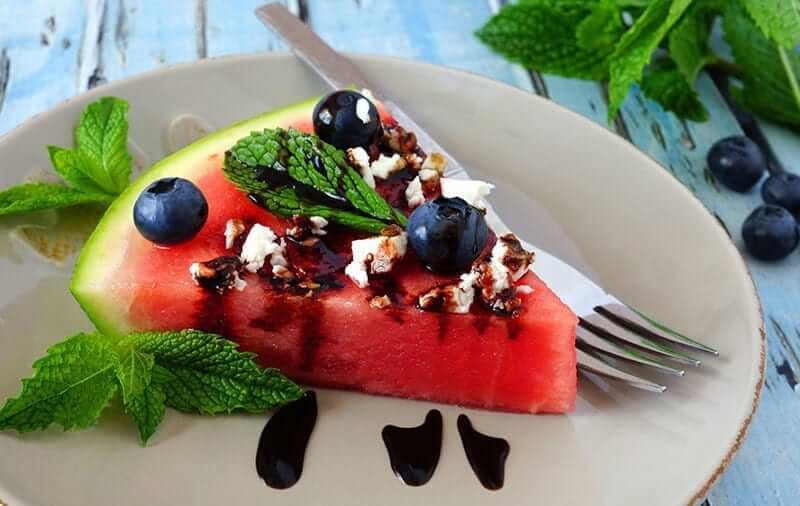According to a new statement published in Diabetes Care, “Type 1 diabetes management for children and adolescents must be different than adult care and providers should consider a child’s evolving developmental stages in creating a care plan.” Pediatric Diabetes Journal looked at a study involving over 23,000 children and stated “1 in 3 children and teens with type 1 diabetes are overweight or obese.” We assume that children and adolescents with type 1 diabetes are always underweight or thin and those with type 2 are overweight or obese. Although this is often true, there is a tendency to see boys with type 1 under 10 years of age and girls with type 1 over 10 years of age display a prevalence of being overweight or obese. The National Association of School Nurses states, “these children do not achieve control and develop diabetes complications sooner than those who are controlled.” Type 2 diabetes is still on the rise in children and adolescents due to childhood obesity and lack of physical exercise. Type 2 diabetes in children is seen especially in females, over 13 years of age, who have a family history, are already overweight or obese and are of African American, Hispanic or Native Indian descent. There are only a few ways to medically treat type 2 diabetes in children including the use of Metformin, bariatric surgery or insulin. Type 1 diabetes focuses on insulin use. In addition to medical management, proper nutrition and an exercise plan are critical for life-long diabetes control. Set the stage for the new and hopefully successful school year by learning certain diabetes guidelines and providing good choices for your children.
What You and the School Can Do:
- Meet with the school nurse as soon as time allows. There are federal laws in place to help your child at school when they have diabetes.
- Young children should be able to get their diabetes care needs met, stay safe, eat a nutritious meal, be offered a glucose source if required, participate in all activities, be treated with insulin, have diabetes testing needs met, be given a glucagon shot in an emergency with assistance from the school staff. The main teacher and teacher’s aide in the classroom should be well informed of your child’s needs.
- Adolescents and teens should be allowed to continue to practice self-management, as prescribed. The school needs to respect the student’s privacy since adolescents and teens are self-conscious. This gives them the ability to avoid unwanted attention. School staff and professionals should offer help when requested.
- Children without weight issues should be offered a “no food off limits” plan in moderation, since any item can be worked into a food plan, with proper insulin adjustments if needed.
- Know what choices are offered in the vending machines and have the discussion before the purchases will be made. Most vending machines offer a variety of products and with good prior decisions, they will still have some freedom. Find out what is being sold in the student union store. This may be another trap especially for younger children with candies displayed everywhere. Work on a list of acceptable choices together.
- Visit the cafeteria with younger children and check daily choices online which are usually set for the entire week. Younger children may be more finicky, so make sure there is an option, since missing lunch or any meal is never recommended. Most schools offer salad bars or sandwich bars with a choice of protein. The hot food section usually provides a protein, a carbohydrate and choice of vegetables. Ethnic food days such as Italian or Mexican Day may warrant further information, or you may decide to send a packed lunch. Some online sites list specific dish/ menu ingredients.
- Ask questions and allow your child/teen to ask questions. The child/teen needs to feel safe. Does your school have a therapist or counselor on site to aid in the transition of a new school year?
What you can do at home for a successful and nutritious school year:
Wake up early for the breakfast meal. Morning rushing around leads to missing food, hunger, fatigue, hypoglycemia and possible roller-coaster blood sugars for the rest of the day. Protein should always be included in each meal to help keep blood sugars stable and your child satiated. High fiber bread with cheese, a whole grain waffle with nut butter or eggs and a side of fresh fruit are all possible choices.
- Stick to the proper method of eating. Whole foods in the most natural form including fruits, vegetables, beans, legumes, whole grains, low fat dairy, skinless poultry, fatty fish, non- tropical vegetable oils for cooking, and herbs for flavoring. Since heart disease is so common in people with diabetes, limit red meat, whole fat dairy, egg yolks and avoid processed and boxed foods and sweet, sugary drinks. This offers you and your child the best potential for maintaining health, blood sugar and weight over the years.
- Veggies should include dark, leafy greens, red, purple and orange colored foods. Nuts, seeds and foods high in Omega 3 fatty acids are always a winner for fiber and to lower systemic inflammation.
- Think about adding food groups and not deleting groups especially with young, curious children. Look for nutrient-dense foods and eat a variety of them so you can get all the vitamins and minerals needed.
- Avoid chewable or gummy bear vitamins which are full of sugar. If your child is eating a balanced diet, vitamins are not usually necessary. If you do want to inquire, ask your pediatrician if vitamins are needed and what brand to choose.
- Double food amounts. Everyone gets extra busy during the school year and this really saves time. Make a pan of several chicken breasts, serve the first night with a green vegetable and quinoa and the next night as chicken fajitas, chicken tacos, chicken salad or chicken soup. Do this with other sources of lean protein.
- Use left over dinner items for next day’s kid’s lunches.
- Make deconstructed dinners. Instead of the formal dinner plate served complete at the table, set up salad bars, soup bars, potato bars, pasta bars, sandwich bars or quesadilla bars. This keeps food interesting, tasty, affordable, and helps gives everyone a choice and individuality. Have the children slice and dice to keep them involved. Make and serve homemade sauces or guacamole. Recreate the cut-up foods the next day.
- Food swaps. Swap white rice which contains no fiber with yellow, wild, black or brown rice, barley, farro, quinoa, buckwheat or bulgur for a better quality of carbohydrate. There is a new generation of meat substitutes made from grains, beans, plant proteins and other ingredients to replace some red meat meals. Meat substitutes used to be mostly made from soy and now have been changed to pea, protein isolate, mung beans, mustard seeds and sunflower seeds. These products are filling, high in protein and have improved taste, color and texture. Swap mashed potatoes with mashed cauliflower. Swap white rice with mashed broccoli. Use crushed almonds or seeds for bread crumb or flour coating. Make vegetable swirls with a spiralizer and add to a whole grain or high protein pasta dish. Make yummy pudding out of Chia seeds, water, almond milk, vanilla extract and a few chocolate chips instead of buying pre-packed, sugary, processed puddings. Use almond flour for baking and Panko bread crumbs for coating food. Substitute mashed banana, mashed peaches or apple sauce for baking to add sweetness instead of white sugar. Use low fat cottage or Ricotta cheese instead of sour cream and low-fat plain yogurt instead of mayonnaise.
- Kids and caffeine. Caffeine is a, “naturally occurring chemical,” that acts like a central nervous stimulant, fighting fatigue and helping alertness. “Caffeine tops the charts as one of the most commonly consumed ingredients around.” Most kids, tweens and teens get their caffeine intake from energy drinks, pre-made iced tea and diet soda, although some do drink regular coffee. Many children are extremely sensitive to the effects of caffeine and can get headaches, sleep problems, anxiety, depression, increased heart rate, palpations and high blood pressure. It may even affect blood sugars in some people. Caffeine symptoms may mimic hypoglycemia and they should avoid it completely. Talk to your doctor if you have questions about caffeine.
- Sports and energy drinks. Gatorade and Powerade in its regular variety contain up to 7 teaspoons of sugar per serving and can erode tooth enamel. Energy drinks have up to 6-7 teaspoons of sugar and high amounts of caffeine. Most student athletes do not require any of these drinks. Stick to a small banana and a cool glass of water for lost electrolytes. Choose the low sugar variety of sport drinks if your child enjoys the flavor. Plenty of cool, plain water is always preferred. Flavor with fresh berries, watermelon or cucumber slices.
- Commonly eaten foods with hidden sugars. “The average American eats 22 teaspoons of sugar a day.” Hidden sugar is the worst ingredient for anyone’s diet since it may cause weight gain, type 2 diabetes, fatty liver syndrome, cancer, heart disease, reduced brain function and leaky gut syndrome. Keep your children with diabetes away from added sugar by skipping regular jarred spaghetti sauce, granola bars, flavored or flip container yogurts, instant flavored oatmeal packs, store brand salad dressings and coleslaw, most breakfast cereals, baked goods, processed foods, store made fruit smoothies, milk alternatives such as soy, almond, coconut, cashew, rice, or hemp milk which may be sweetened with added sugar, low fat foods, dried fruits, condiments like ketchup or BBQ sauce and fruit juice. Recently, reading food labels has become a lot easier due to new laws.
- Watch out for “no sugar added” labels since products may contain natural sugar in high quantities. Again, read labels.
- Freeze homemade dinners into individual servings. Or purchase when on sale, several high quality, low sodium and low carbohydrate prepared frozen dinners when time is of essence.
- Packing your child’s lunch and snacks may give you better control over their food choices and may be more economical. The support staff at school should be reminded about the importance of proper daily nutrition, especially with the younger children. Make sure to pack plenty of healthy snacks for the school day to avoid lows. Things like hummus and vegetable strips or peanut butter with whole grain crackers or plain Greek yogurt with seeds and berries will provide a complete snack. Make sure the lunch price is not already included in the school fee if you are sending a lunch.
- Sandwiches are easy and satisfying when they contain protein and carbohydrates. Learn how to make a healthy sandwich your child will enjoy. Substitute whole grain, rye, pumpernickel, sour dough or sprouted bread instead of white bread. Swap out fattening processed meats, such as bologna, bacon, hot dogs or salami, for grilled chicken, tuna fish, or roasted turkey. Use mustard as a delicious low-sugar condiment. Top off the sandwich with lots of vegetables for fiber including avocado, tomato, lettuce and shredded carrots. Add natural, low-fat cheese rather than a slice of processed cheese.
- It can be tempting for a child to eat chips with a sandwich or as a snack. Instead of giving your child greasy and salty potato chips, look for baked chips in small individual packages. Pretzels or individual small bags of popcorn offer more fiber. There are also many varieties of vegetable chips on the market such as kale, zucchini, green bean or carrot chips. Substitute nuts for chips in small quantities such as almonds and walnuts which contain protein and fat. They will keep your child energized without causing his or her blood sugar to rise.
- Another tasty, guilt-free treat is to freeze grapes or banana slices and add a handful of nuts or nut butter to balance the sugar in the fruit.
- A child may try new foods if it includes plenty of unique and colorful ingredients. Toss together mixed greens or spinach with slices of apple, mandarin oranges and strawberries. This fresh mixture of flavors and textures keeps kids happy. Add a handful of pumpkin or sunflower seeds for a unique flavor, fiber and a filling salad. Mix mozzarella cheese, tomatoes, fresh basil and olives with grilled chicken to turn a salad into a quick complete meal.
- Encourage your child to participate in sports to get at least 30 minutes of exercise each day. Walking or swimming is perfect if your child does not want to engage in team sports. Moving daily must be part of a diabetes care plan for children. Talk to your child’s health care team before starting any exercise or sports program. They will require a school physical.
- Children tend to want foods that seem fun to eat and can be carried around while they do other things. Low-fat string cheese is a healthy snack on-the-go. Fresh, low-fat cheese with whole grain crackers provides calcium and fiber. Companies are packaging all kinds of individual snacks which could work.
Another tasty and portable option is to make melon balls, using melons such as cantaloupe, casaba, honeydew and watermelon. Fruits are carbohydrates and if eaten in large portions may cause high blood sugar fluctuations. They can be and are part of a healthful diet when eaten in proper portion size.
- When buying new food products for your family, avoid fancy buzzwords and marketing terms. Food companies have gimmicks which include words like, “fat burning, immunity boosting, sugar-free, natural, wholesome, superfoods, protein packed”, are used for the quick sell and offer no real nutritional benefits.
- Keep certain snacks around at home and at school to help your child if he or she experiences low blood sugar. This can include 6 ounces of regular soda or a small cup of orange juice, low-fat or nonfat milk, and 2 tablespoons of raisins. Regular glucose tablets should always be available as well.
- For a treat at a class party, bring sugar-free candy which should not cause blood sugar spikes when eaten in proper serving size. Sugar-free does not mean calorie or carbohydrate free. Remember, it may cause an upset stomach if eaten in large portions due to the sugar alcohol content. Regular sweets can be included in a meal plan when properly planned out and if your child’s weight is not a concern. Be sure to include sugar-free liquids so they will stay hydrated all day long.
These healthy back-to-school tips are to help your child avoid blood sugar problems, food choice temptation and learn better eating habits for a lifetime. Be an example to your child with diabetes and eat healthy, too. With some education and planning, your child can avoid blood sugar fluctuations and simply enjoy this new school year!
Have a question or comment? Then post below, no registration required. I would love to hear from you!
NOTE: Consult your Doctor first to make sure my recommendations fit your special health needs.

 Wake up early for the breakfast meal. Morning rushing around leads to missing food, hunger, fatigue, hypoglycemia and possible roller-coaster blood sugars for the rest of the day. Protein should always be included in each meal to help keep blood sugars stable and your child satiated. High fiber bread with cheese, a whole grain waffle with nut butter or eggs and a side of fresh fruit are all possible choices.
Wake up early for the breakfast meal. Morning rushing around leads to missing food, hunger, fatigue, hypoglycemia and possible roller-coaster blood sugars for the rest of the day. Protein should always be included in each meal to help keep blood sugars stable and your child satiated. High fiber bread with cheese, a whole grain waffle with nut butter or eggs and a side of fresh fruit are all possible choices. Another tasty and portable option is to make melon balls, using melons such as cantaloupe, casaba, honeydew and watermelon. Fruits are carbohydrates and if eaten in large portions may cause high blood sugar fluctuations. They can be and are part of a healthful diet when eaten in proper portion size.
Another tasty and portable option is to make melon balls, using melons such as cantaloupe, casaba, honeydew and watermelon. Fruits are carbohydrates and if eaten in large portions may cause high blood sugar fluctuations. They can be and are part of a healthful diet when eaten in proper portion size.





Leave A Comment